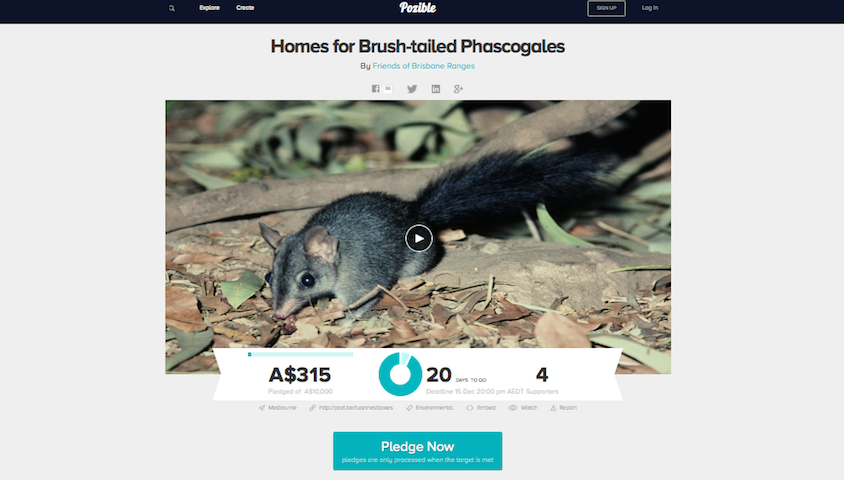This week more than eighty Victorian groups seeking to support and protect threatened species have been awarded Community Volunteer Action Grants to assist their operations.
Five of these groups that have received grants as part of the state government’s $5.2 million Threatened Species Protection Initiative have also launched crowdfunding campaigns to raise awareness and further funds via Pozible.
Minister for Environment, Climate Change and Water, Lisa Neville announced the grants on Monday, saying the money was provided to “support important threatened species protection work at a local level”.
So far, $1.2 million has been awarded across the 80 groups in Community Volunteer Action Grants, with a further $3 million to be delivered via the initiative’s Critical Action and Strategic Partnerships grants.
Both citizen science and restoration projects have received grants, such as the work involved in protecting hooded plover nesting sites on the beaches of East Gippsland, habitat surveys of striped legless lizards in northeast Victoria; as well as weed removal and planting of new habitat for Bibron’s toadlet in Castlemaine, for long-nosed potoroo in the Otways and also for the dwarf galaxias in Watson’s Creek, north of Melbourne.
While a second round of community grants will also be made available in early 2016, the five groups launching crowdfunding campaigns will have the opportunity to have the results of their fundraising matched by the government – up to a total of $25,000 per successful campaign.
One of the five projects, run by the Friends of the Brisbane Ranges (FOBR), seeks to install nest boxes for the brush-tailed phascogale as a means of providing habitat and an easy means of monitoring the region’s population.
FOBR president Colin Cook believes the novel dollar-matching initiative may help generate much-needed additional funding for such projects, which he says has been traditional difficult to achieve.
“We’ve been carrying out monitoring projects on phascogale since the bushfires in 2006,” Cook told Wild.
“After the fires we wanted to know what we’d potentially lost, but we quickly found there was very little data that existed on the species and that acquiring was a real challenge.”
Cook explains that traditional monitoring techniques, which require field researchers to set lines of traps, are notoriously labour intensive and are usually only performed over short time spans.
“We’re extremely interested in more modern techniques that employ technologies like camera traps and nest boxes. Other regions have had some real success in setting up nest boxes for species like the phascogale and squirrel gliders.”
Having set up FOBR’s new project on Pozible, Cook believes it is possible that the platform could generate the kind funds that are required to make the initiative a real success.
“A recent example was set by Mount Rothwell Sanctuary, which successfully raised money for quolls in a similar way, so we know it is feasible. The main thing you have to consider is your ability to publicise the campaign. You need to have a good network to make it work; you need a large Facebook following and you probably need many of them to spread the word through their own networks as well.”
However, due to the nature of the Pozible platform, FOBR and the other groups need to generate at least $10,000 worth of pledges apiece in order to secure their funding.
With a campaign deadline of the 15th of December, these five groups will be working hard in the next few weeks to raise awareness for their projects.
“I encourage anyone, anywhere, who is passionate about conservation and helping save our species, to get behind these exciting grassroots campaigns,” Neville said.


